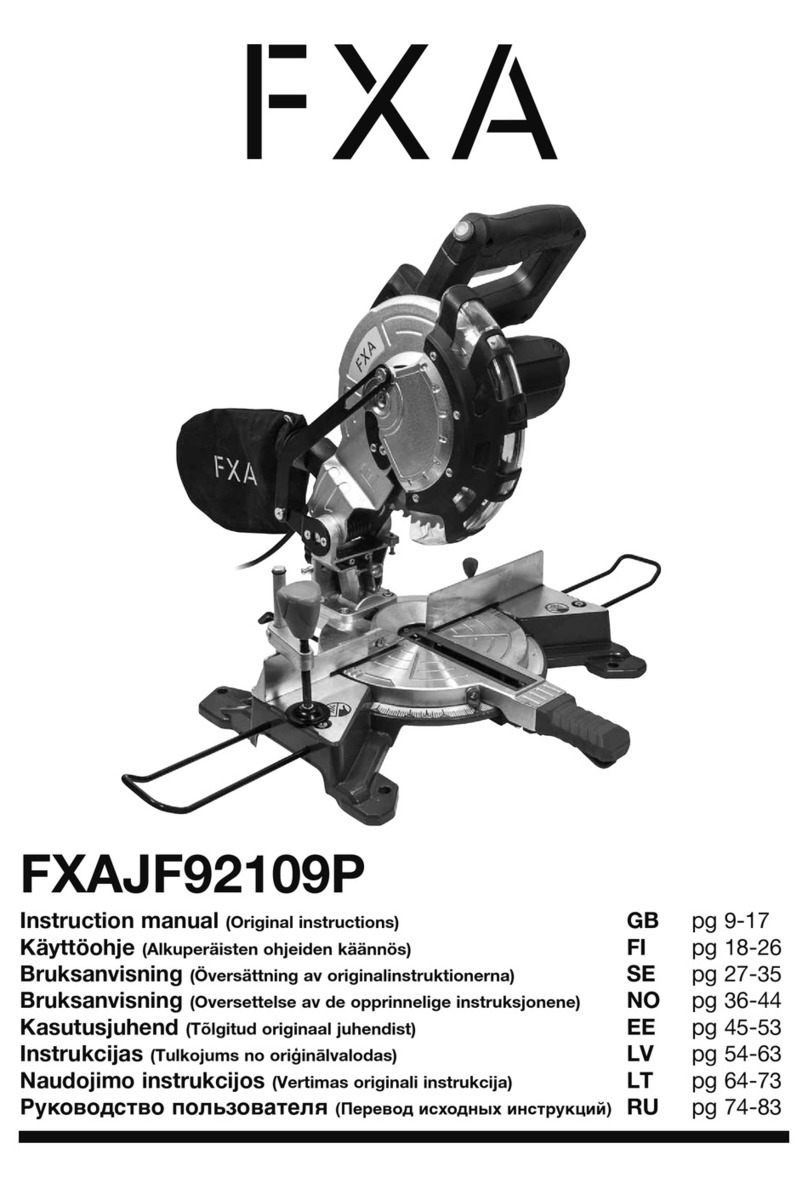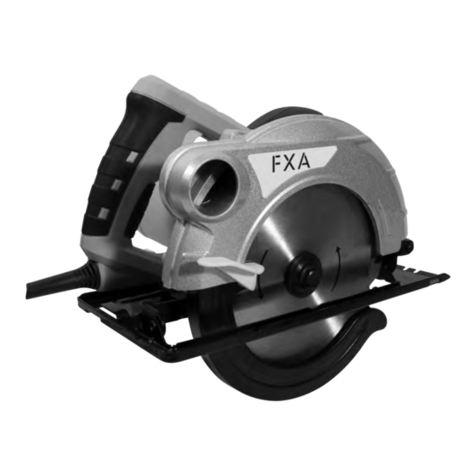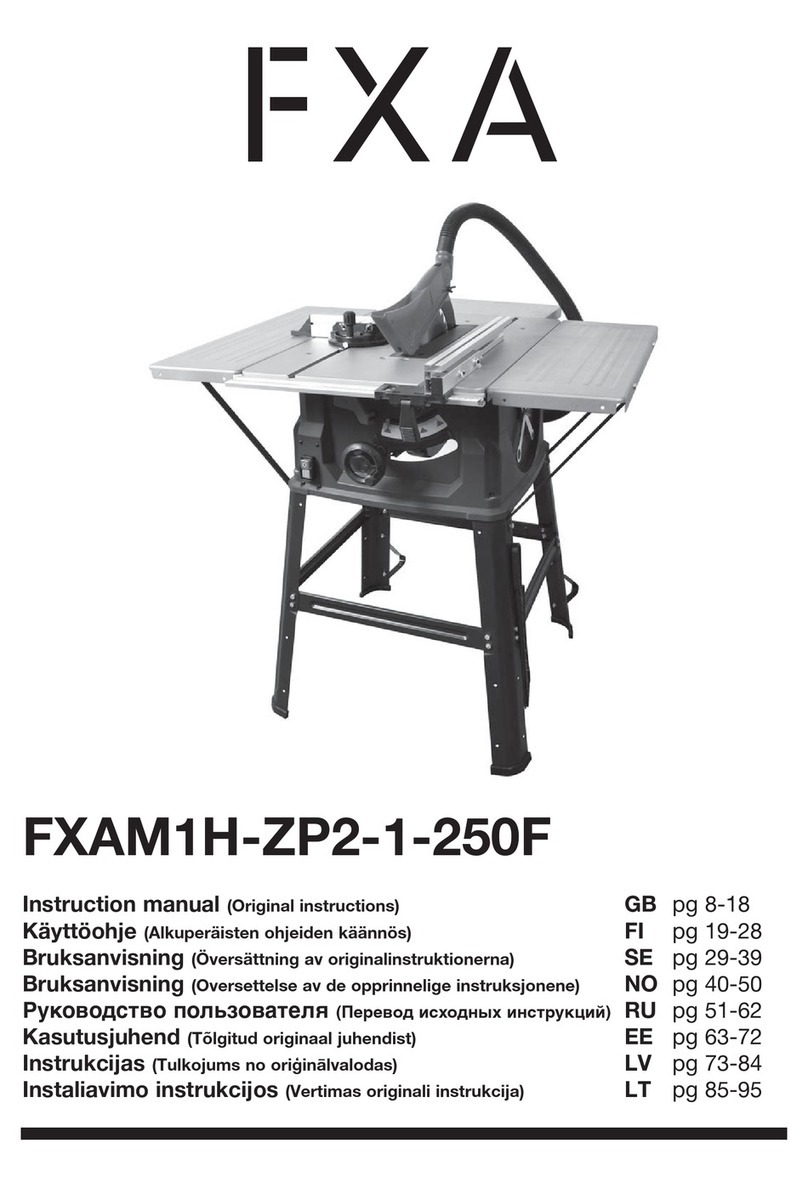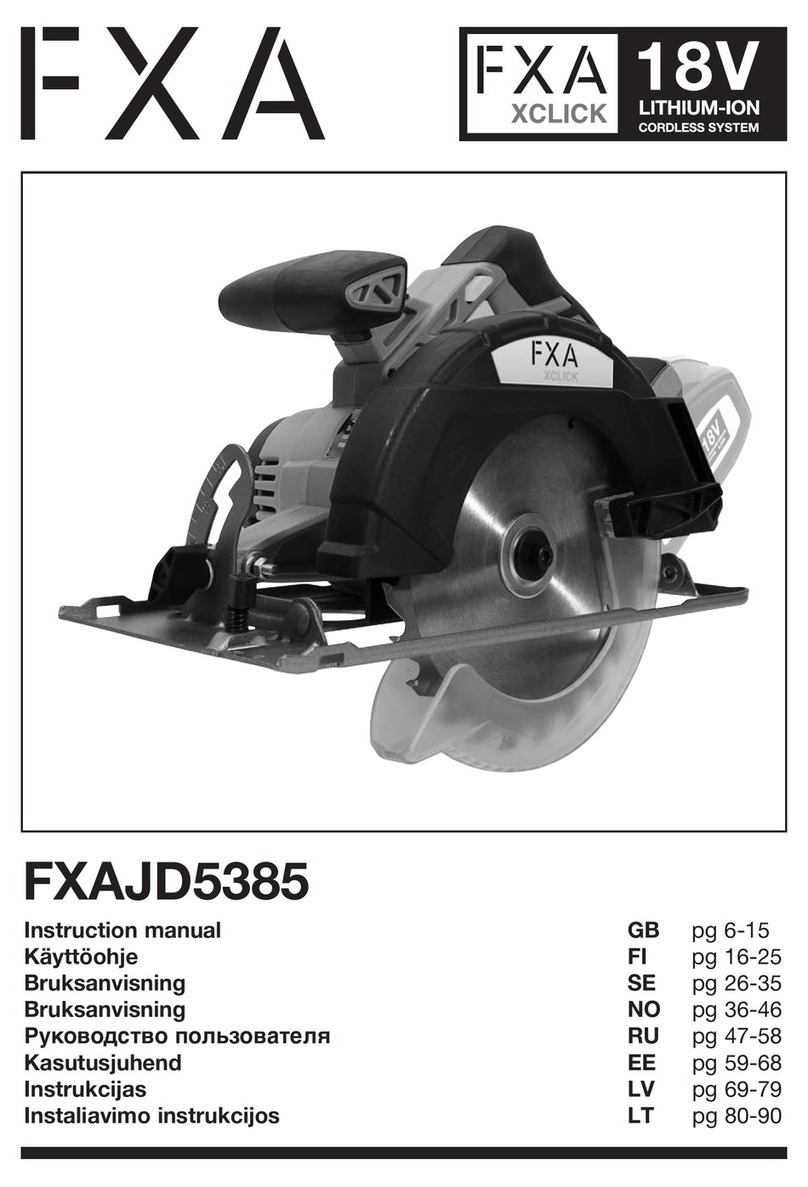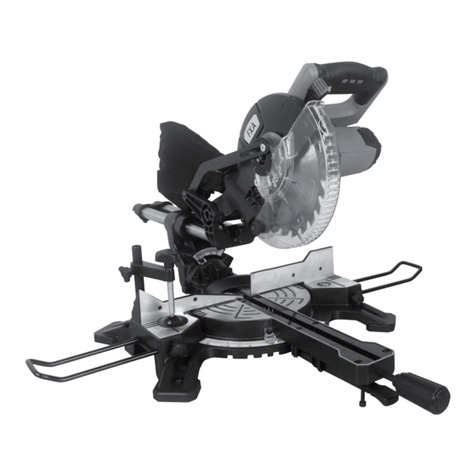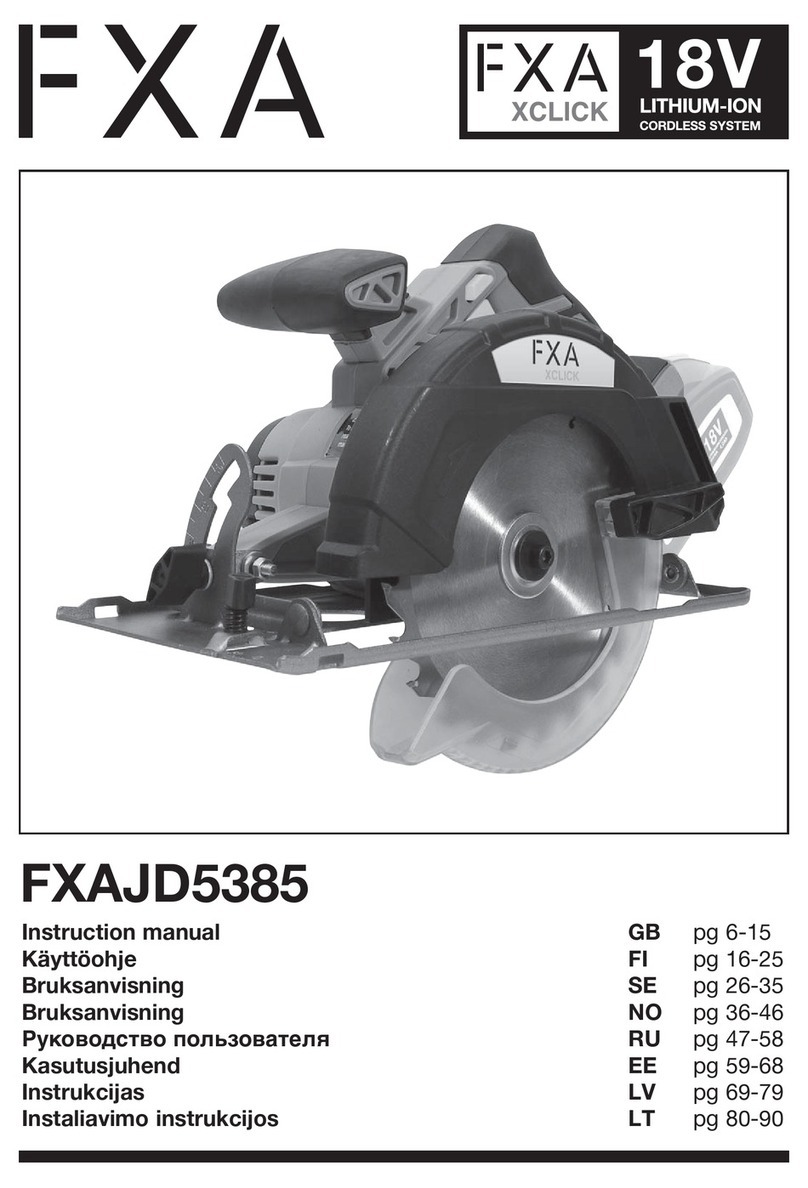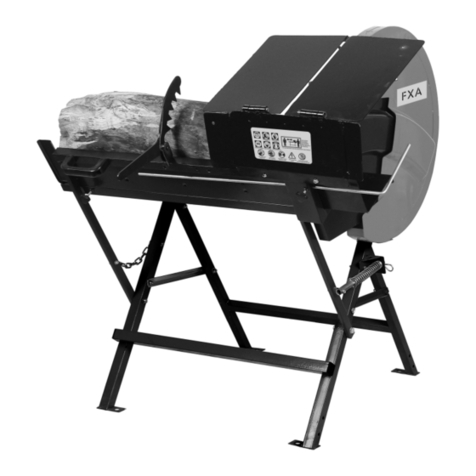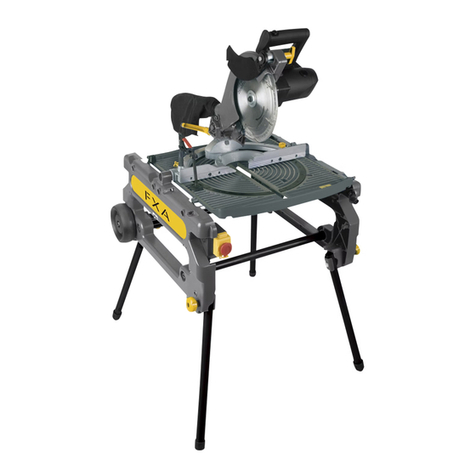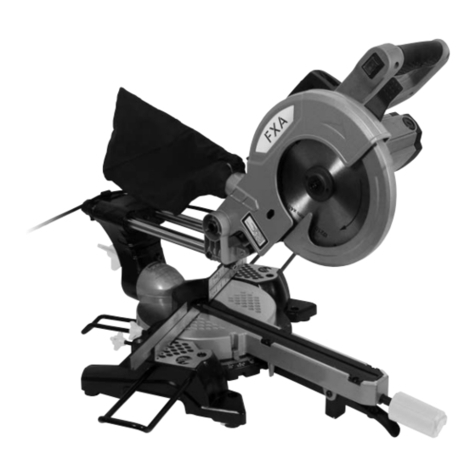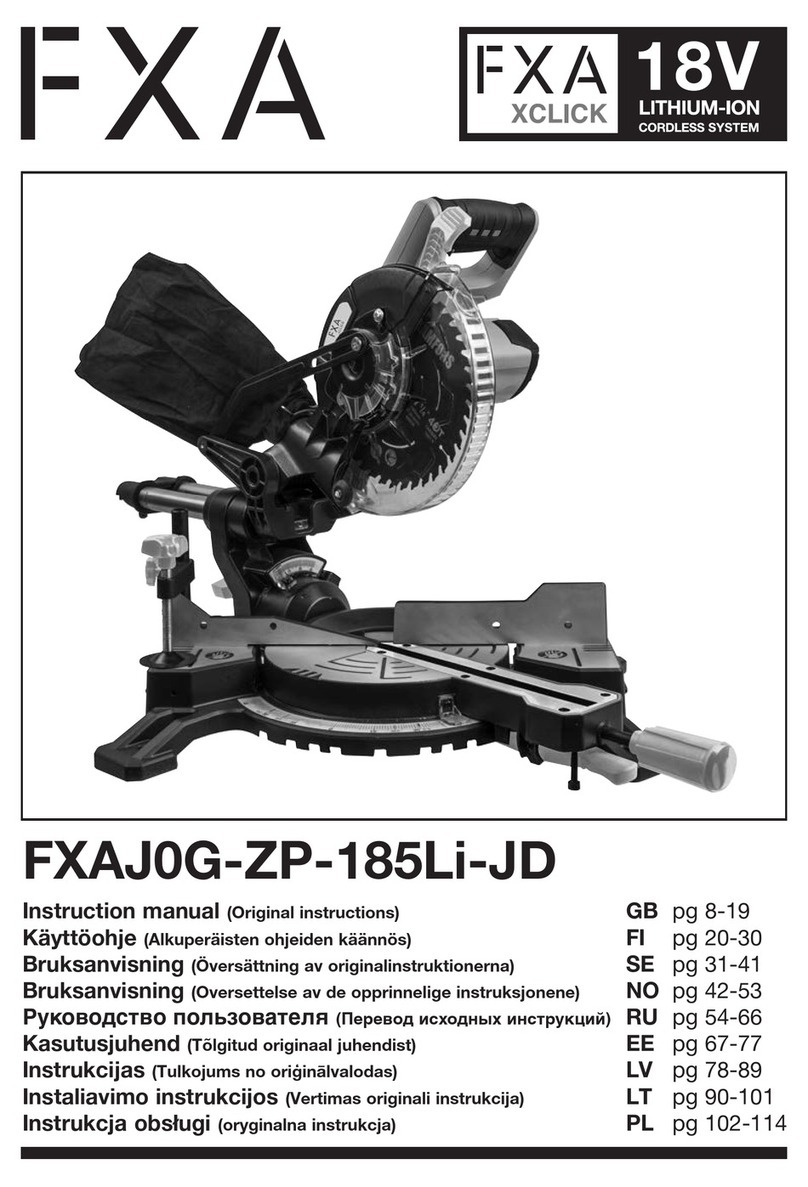
9
INTRODUCTION
Thank you for purchasing this product which has
passed through our extensive quality assurance
process. Every care has been taken to ensure that it
reaches you in perfect condition.
SAFETY FIRST
Before attempting to operate this power tool the
following basic safety precautions should always be
taken to reduce the risk of fire, electric shock and
personal injury. It is important to read the instruction
manual to understand the application, limitations and
potential hazards associated with this tool.
CERTIFICATE OF GUARANTEE
This product is guaranteed for a period of 2 Years,
with effect from the date of purchase and applies only
to the original purchaser. This guarantee only applies
to defects arising from, defective materials and or
faulty workmanship that become evident during the
guarantee period only and does not include
consumable items. The manufacturer will repair or
replace the product at their discretion subject to the
following. That the product has been used in
accordance with the guide lines as detailed in the
product manual and that it has not been
subjected to misuse, abuse or used for a purpose for
which it was not intended. That it has not been taken
apart or tampered with in any way whatsoever or has
been serviced by unauthorised persons or has been
used for hire purposes. Transit damage is excluded
from this guarantee, for such damage the transport
company is responsible. Claims made under this
guarantee must be made in the first instance, directly
to the retailer within the guarantee period. Only under
exceptional circumstances should the product be
returned to the manufacturer. In these case it shall be
the consumer’s responsibility to return the product at
their cost ensuring that the product is adequately
packed to prevent transit damage and must be
accompanied with a brief description of the fault and
a copy of the receipt or other proof of purchase. The
manufacturer shall not be liable for any special,
exemplary, direct, indirect, incidental, or consequential
loss or damage under this guarantee. This guarantee
is in addition to and does not affect any rights, which
the consumer may have by virtue of the Sale of Goods
Act 1973 as amended 1975 and 1999.
The power tool is intended for domestic use only.
The power tool is not suitable and is not intended
for commercial or professional use.
The warranty does not cover defects and damage
to power tools resulting from use for purposes
other than domestic use, in particular as a result of
pushing through and abuse.
”Warranty is voided in case the tool is damaged due
to one of the conditions below:
1. Misuse of product or negligence of proper
maintenance of product,
2. Commercial, professional or rental use of product,
3. Repair done by an unauthorized service company.
4. Damages caused by external objects or
substances.”
STATUTORY RIGHTS
This guarantee is in addition to and in no way affects
your statutory rights.
PRODUCT DISPOSAL
When this product reaches the end of it’s life or is
disposed of for any other reason, it must not be
disposed of in household waste. In order to preserve
natural resources, and to minimise adverse
environmental impact, please recycle or dispose of
this product in an environmentally friendly way. It
should be taken to your local waste recycling centre
or other authorised collection and disposal facility.
If in doubt consult your local waste authority for
information regarding available recycling and / or
disposal options.
HEALTH ADVICE
Warning: When drilling, sanding, sawing or grinding,
dust particles will be produced. In some instances,
depending on the materials you are working with, this
dust can be particularly harmful to you (e.g. lead from
old gloss paint).You are advised to consider the risks
associated with the materials you are working with
and to reduce the risk of exposure.
You should:
Work in a well-ventilated area.
Work with approved safety equipment, such as dust
masks that are specially designed to filter microscopic
particles.
INTENDED USE
The bench-type circular saw is designed for the
slitting and cross-cutting of all types of timber,
commensurate with the machine’s size.
The machine is not to be used for cutting any type of
roundwood.
The machine is to be used only for its prescribed
purpose. Any use other than that mentioned is
considered to be a case of misuse.
The user/operator and not the manufacturer shall be
liable for any damage or injury resulting such cases of
misuse. The user/operator and not the manufacturer
shall be liable for any damage or injury resulting such
cases of misuse.
The machine is to be operated only with suitable saw
blades. It is prohibited to use any type of cutting-off
wheel. To use the machine properly you must also
observe the safety regulations, the assembly
instructions and the operating instructions to be found
in this manual. All persons who use and service the
machine have to be acquainted with this manual and
must be informed about its potential hazards. It is also
imperative to observe the accident prevention
regulations in force in your area. The same applies for
the general rules of occupational health and safety.

